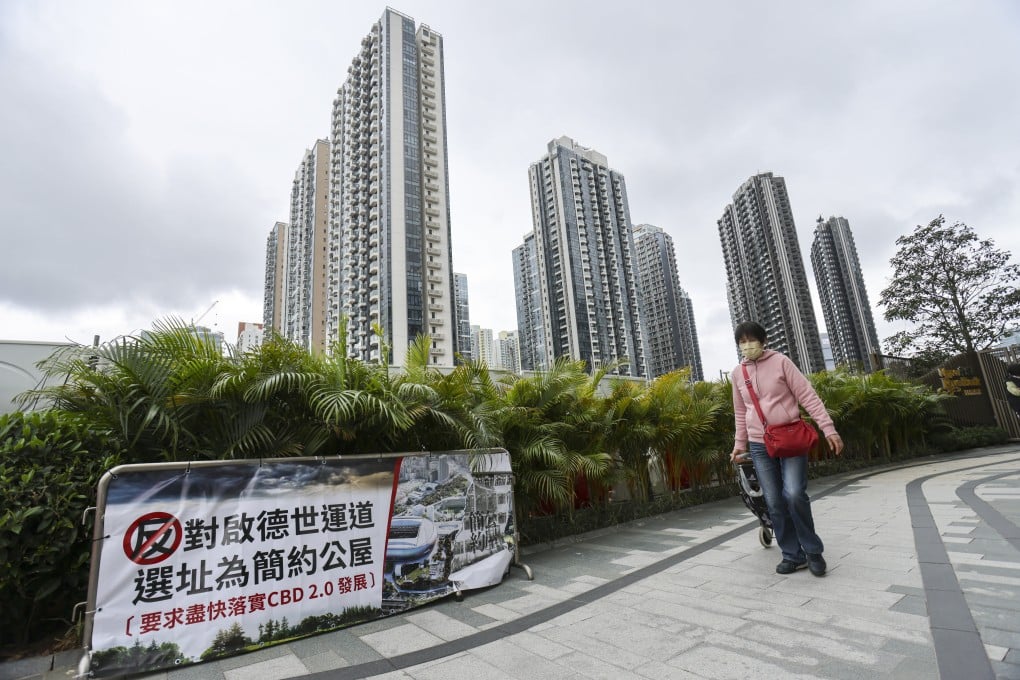Advertisement
Opinion | What’s the point of temporary housing if it still takes years and millions to build?
- Kai Tak protest highlights the challenges of the ‘light public housing’ project, which is now neither cheap nor quick
- Far better to repurpose decommissioned quarantine units, which are also modular, and focus on the real mission – permanent public housing
Reading Time:3 minutes
Why you can trust SCMP
1

Twenty-five years after the last flight took off from Kai Tak, the area is again generating the noisiest sound bite in town.
Advertisement
The arguments against locating 10,700 “light public housing” units at the Olympic Avenue plot are many and varied. Local residents have protested against the lack of public consultation, the potential delays in opening the city’s second central business district, the obstruction of views from other low-level residential buildings in surrounding complexes, the significant increase in traffic and congestion and the potential fall in property value. The list goes on.
Regardless of the validity of their claims, for lack of better words, the protesting residents simply do not aspire to be part of a social melting pot. The government has tried hard to motivate a new Hong Kong spirit, but these residents are not ready to share their neighbourhood with people on low incomes.
Early opposers lawmaker Kitson Yang Wing-kit and Real Estate Developers Association chairman Stewart Leung Chi-kin might have forgotten that, not so long ago, the government went on a mission to unearth the underlying reasons behind the 2019 civil unrest – social inequality and housing appeared to be at the root of the problem.
Yang and Leung seem to have learned quickly, however, backing off from their original strong stance. Yang abstained from voting for, rather than voted against, the HK$15 billion first-round funding proposal in the Legislative Council. Private developers led by Leung have also softened their stance on the government proposal, saying they were fine with it as long as the temporary housing units were sited some distance away from the old runway – a prime site for luxury private housing.
Advertisement
Secretary for Housing Winnie Ho Wing-yin has been dealt a challenging hand. Her original good intention was to quickly provide transitional housing for families suffering in subdivided flats or cage homes, and those forced to live on the streets. Indeed, Ho might be the first secretary since the 1997 handover to tackle the long wait for public housing head-on. She has probably done more than all of her predecessors combined in the first seven months of her tenure.

Advertisement
